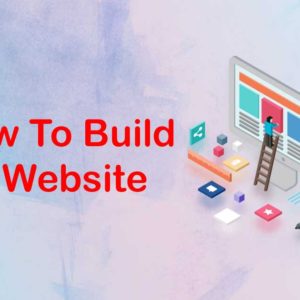Nowadays, it has become increasingly easy to create a website. Whether you’re building a website for your business or yourself, you can use the right resources and tools to get it done.
All you need to build a website is to set about two to three hours of your own time and follow a suitable guideline on how to build a website. Here is one;
1. Choose a Domain Name
The domain name refers to the address or the name you’re going to give your website. A domain name is what users will use to search, and find your site on any web browser. There are a few tips to guide you on picking a suitable domain name for your website;
- If you’re looking to create a website for your business, it’s only right to use your business name for the domain. For example, if your business name is Rheyess Retailers, your domain name will be RheyessRetailers.com.
- If the website you’re building is for personal use, then using your name for the domain is a great choice. For example, the domain will take the order YourName.com.
- Always use a generic extension for your domain. For example, .net, .org, .com are suitable if you’re targeting international and United States internet users altogether. However, if you’re looking to target local or country-based internet users, extensions such as .de, .ru, or .r are a valid choice.
2. Register the domain with a website hosting
After you’ve created your domain, you’ll need web hosting where your website files and all the security details regarding your website can be stored Rubber Diaphragm.
Web hosting is the service that will ensure that internet users can access your website content and browse. However, it’s important that the web hosting you’re looking for should have the following features;
- A one-click install option for WordPress.
- It should have a Secure Sockets Layer SSL for security purposes.
- It should have custom email accounts.
- Unlimited bandwidth with no traffic limitations so that your website is accessible to as many internet users as possible.
- A 24/7 live chat is suitable for customer support.
- If you find a website hosting with all these features, you’ve probably found the right one.
3. Set up WordPress Website
This is normally done via website hosting. After you’ve gotten yourself the domain name and website hosting, you’ll need a Content Management System (CMS). And for this reason, we suggest you go for WordPress.
It is by far the most popular CMS, which is used by millions of websites. What makes WordPress convenient for website builders is because it is free to install, use and upgrade.
With thousands of plugins and templates power, you’re guaranteed a flexible and simple user interface for your website and one with less deployment time and costs. The website hosting will set up your WordPress website.
4. Customize your website design and structure
After your website is all set and running, the next thing on the list is to make it feel like yours. For this, you can give it a touch of everything you identify by.
You have the freedom to add all the catchy designs you like and the branding elements for your business. Here are the things you do to customize your website;
- Get the theme you prefer. There are thousands of themes available on WordPress, both free and paid.
- Install the theme you’ve liked and install it.
- Import a design for your theme.
- Add a logo that establishes your website.
- Change the website color and fonts to your preference so that it can stand out from the rest.
- Add a sidebar.
- Add widgets for your website.
- Experiment with the theme you’ve developed for your website.
5. Add content/pages
Your website is not complete without web pages, and they can be created for you using WordPress. Here are some of the important pages for your website;
- Create a Homepage. This is the primary page that all visitors to your website see. For this page, you can add everything from pictures, descriptions, and crucial video elements. These details should be able to tell the users everything there is to know about your website.
- Create pages such as about, contact us, and services you offer.
- Create a blog page for your website where you will be publishing any new content.
- Set up a navigation menu that will help the users navigate your website a bit easier.
- Add an online store or eCommerce for your website if it’s business-related. For this part, you can include content distribution channels; these are the channels you’ll use to promote all the content you create for your website.
Conclusion
If you were looking to learn how to build a website, these steps should guide you through it. Although millions of domains are already taken, you should know that billions of them that are still unused.







